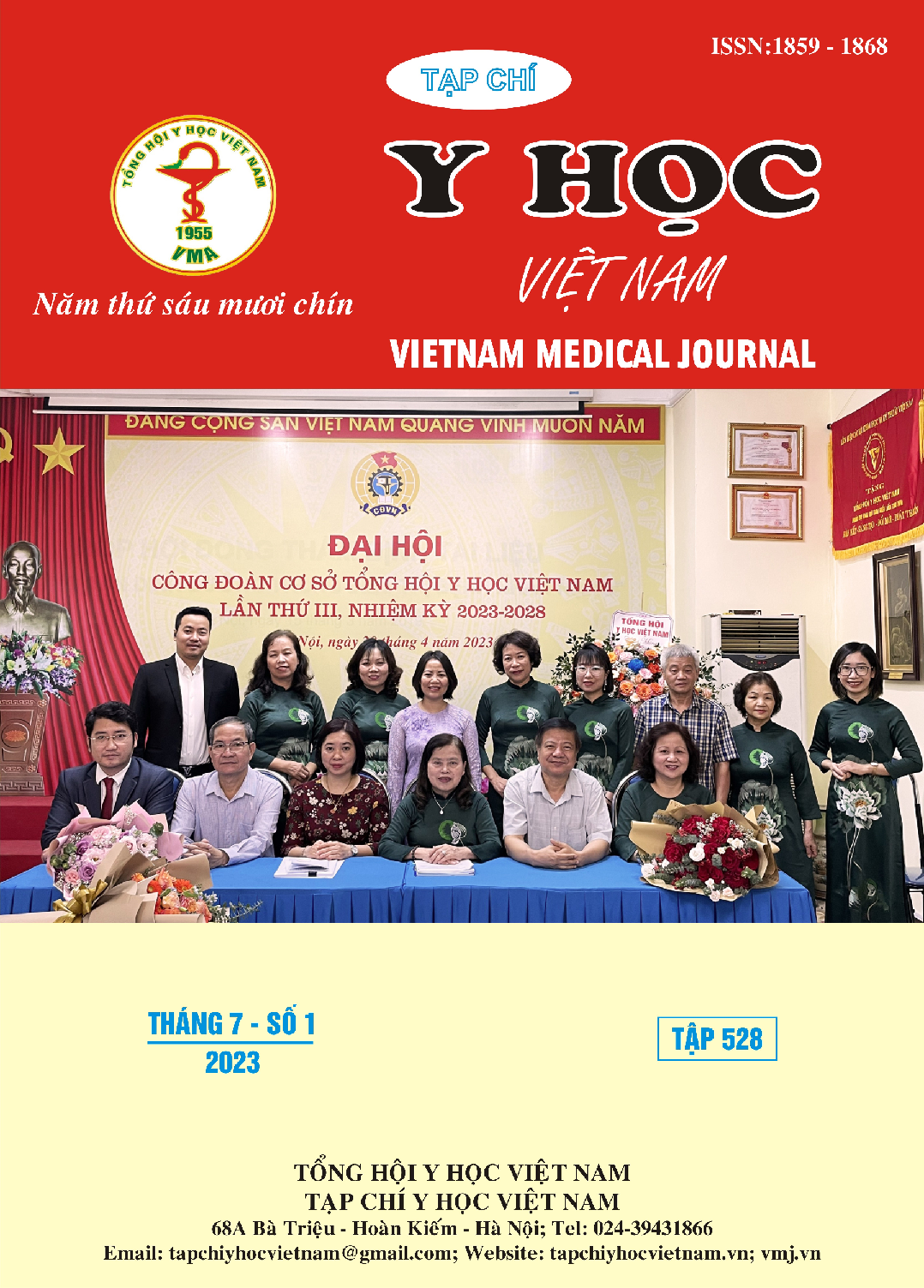RESEARCHING FACTORS RELATED TO DEATH AND RESULTS OF TREATING INHALATION INJURY PATIENTS AT THE ICU, LE HUU TRAC NATIONAL BURN HOSPITAL
Main Article Content
Abstract
Objectives: Evaluation of treatment results and factors related to death in inhalation injury patients at the ICU, Le Huu Trac National Burn Hospital. Subjects and methods: A retrospective study was conducted on 53 inhalation injury patients from 18 years old with burn extent ≥ 20% total body surface area (TBSA) hospitalized within 24 hours after burn at the National Burn Hospital in the period 2021-2022. Collected data was compared between survivor and non-survivor group. Multivariate analysis to find factors independently associated with mortality in inhalation injury patients. Results: The mortality rate of inhalation injury patients was 77.36%. Compared with the group who were survivors, patients who died had significantly higher age, burn extent, deep burn area, number of patients with early acute kidney injury, degree of inhalation injury, arterial blood lactac (p < 0.05). Multivariate analysis of mortality and risk factors indicated that increased deep burn area was independently associated with mortality (p < 0.05). The deep burn area had a good predictive value for mortality in inhalation injury patients (AUC: 0.88; cut-off point: 32% total burn surface area - TBSA), with a sensitivity of 70.73% and a specificity of 83.33%. Conclusion: The mortality rate of patients with inhalation injury was still high. An increase in the deep burn area was independently associated with mortality.
Article Details
Keywords
: Inhalation injury, mortality, treatment.
References
2. You K, Yang H-T, Kym D, Yoon J, Cho Y-S, Hur J, Chun W, Kim J-H (2014) Inhalation injury in burn patients: establishing the link between diagnosis and prognosis. Burns, 40(8):1470-1475.
3. Charles WN, Collins D, Mandalia S, Matwala K, Dutt A, Tatlock J, Singh S (2022) Impact of inhalation injury on outcomes in critically ill burns patients: 12-year experience at a regional burns centre. Burns, 48(6):1386-1395.
4. Woodson LC (2009) Diagnosis and grading of inhalation injury. Journal of burn care & research, 30(1):143-145.
5. Dries DJ, Endorf FW (2013) Inhalation injury: epidemiology, pathology, treatment strategies. Scandinavian journal of trauma, resuscitation and emergency medicine, 21:1-15.
6. Marek K, Piotr W, Stanisław S, Stefan G, Justyna G, Mariusz N, Andriessen A (2007) Fibreoptic bronchoscopy in routine clinical practice in confirming the diagnosis and treatment of inhalation burns. Burns, 33(5):554-560.
7. Khwaja A (2012) KDIGO clinical practice guidelines for acute kidney injury. Nephron Clinical Practice, 120(4):c179-c184.
8. Holt J, Saffle JR, Morris SE, Cochran A (2008) Use of inhaled heparin/N-acetylcystine in inhalation injury: does it help? Journal of burn care & research, 29(1):192-195.


